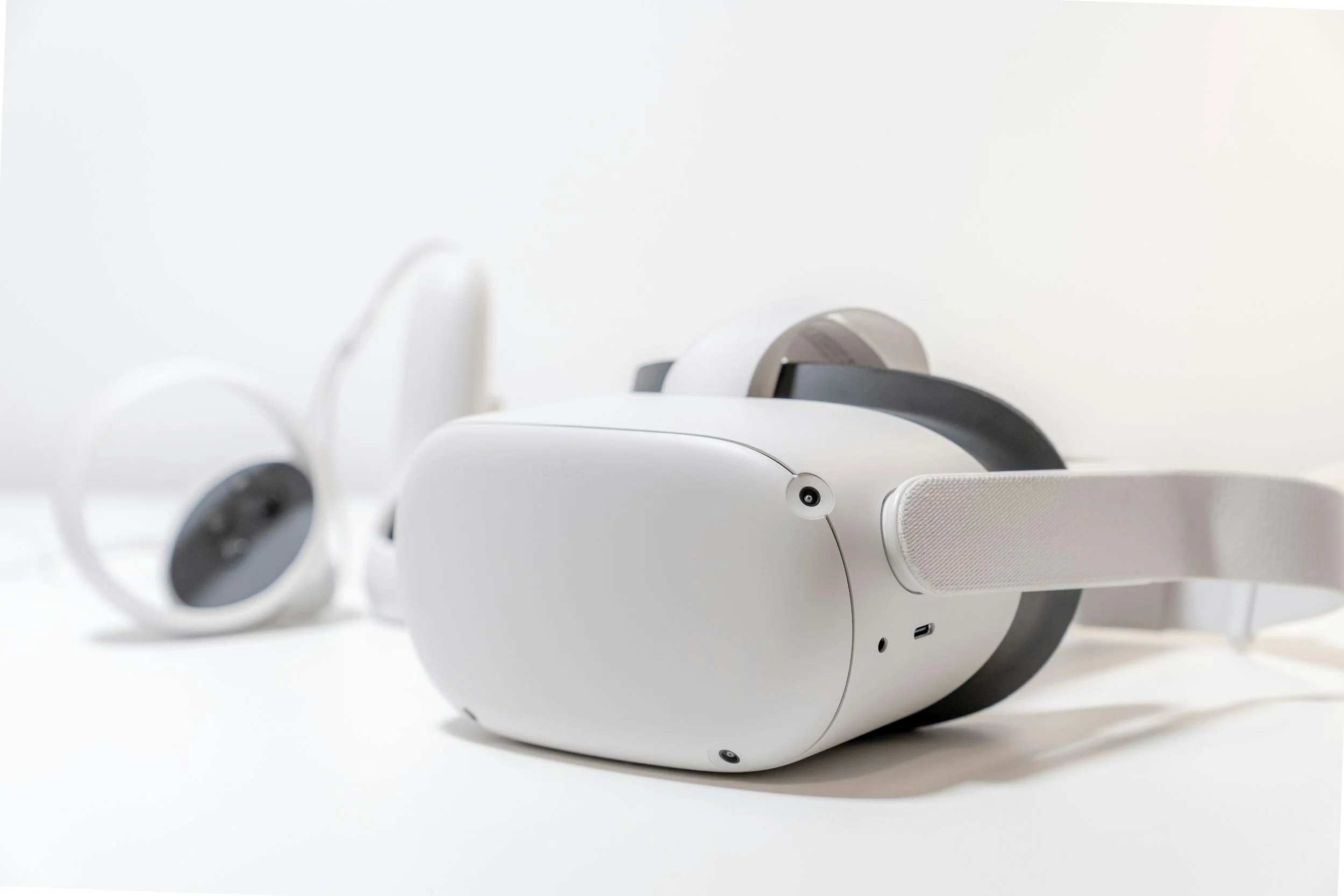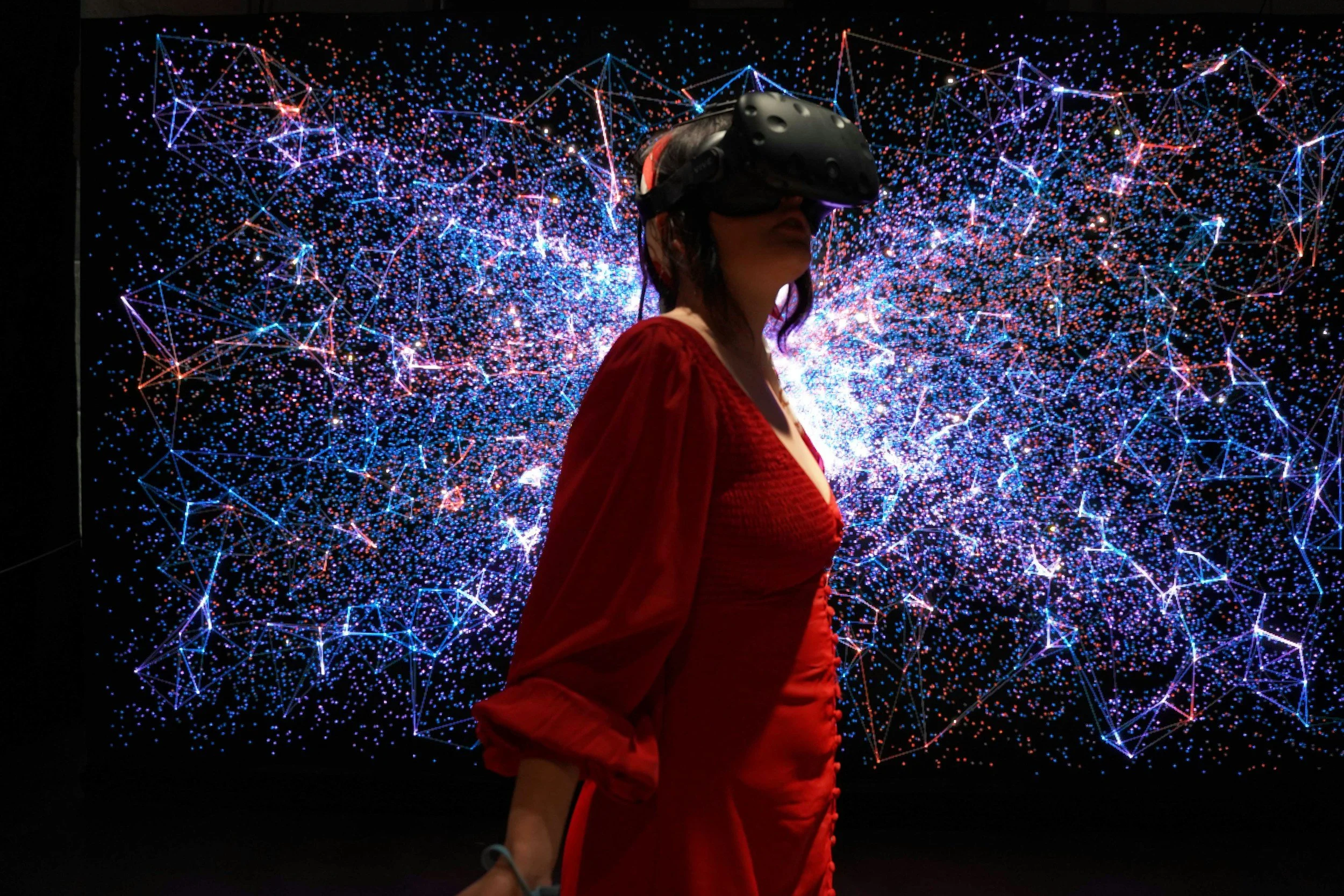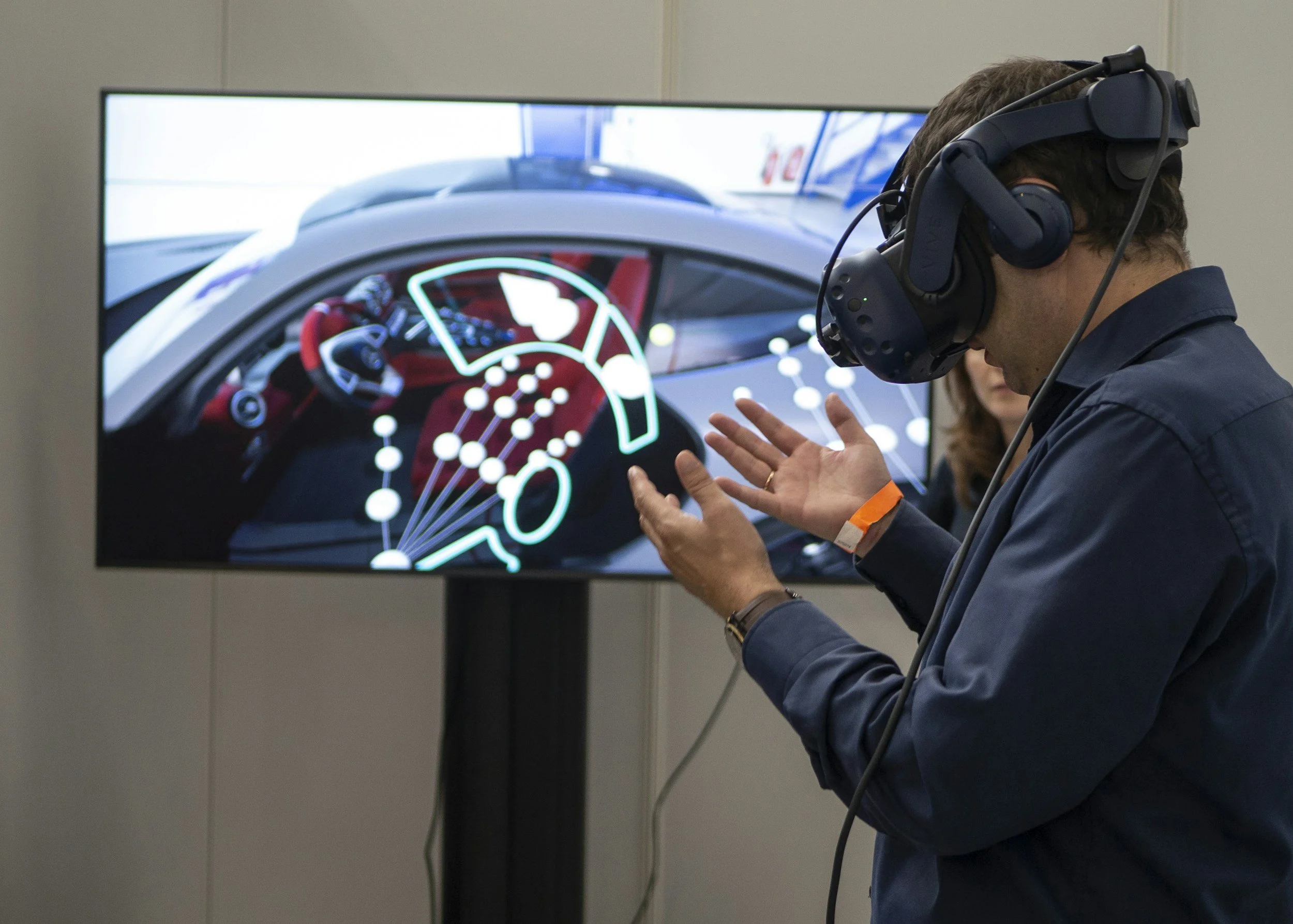
VR Implementation Guide K-12
A practical, curriculum-ready plan including tools, vendors, class uses, & peer-reviewed evidence to get VR into science, math, history, languages, arts, and more within 6 weeks.
Meta Quest 3 headsets are powerful, portable, and affordable enough that many high schools already own a classroom set. With standalone headsets you don’t need high-end PCs or complicated cabling, removing a huge barrier to entry and lets teachers focus on lesson design instead of IT logistics. Practical, classroom-ready VR content exists across subjects: anatomy and virtual dissection tools, 360° field trips, standards-aligned VR lessons, AI language practice in immersive spaces, and platforms for teacher-led live experiences. For overviews and device-ready content on Quest, see Meta’s education/experiences pages.
Quick-start checklist for a safe, effective rollout
Inventory & licensing: confirm number of Quest 3 headsets, battery chargers, and whether apps need per-headset or per-teacher licenses. (Many vendors have education pricing / site licenses.)
Network & accounts: create a managed Meta (Meta Horizon) account for the school and enable multi-user/device management; whitelist required app domains. Meta
Health & safety: set clear time limits (20–30 minutes per session to reduce motion fatigue), opt for seated experiences where appropriate, screen for students with seizure history per your school nurse.
Teacher training: run one short staff training using a producer/teacher mode in the platform (ENGAGE, Nearpod, or similar) before classroom use. ENGAGE XR
Lesson alignment: pick a single learning objective per VR session, and create concrete follow-up tasks (lab worksheet, exit ticket, discussion prompts). Nearpod and Google Arts & Culture make it easy to embed formative checks. Nearpod Support
Science (biology, chemistry, earth science)
Virtual dissections & anatomy: 3D Organon, Visible Body, BioDigital, MedicalHolodeck, and Corpus (on Meta) offer rich anatomy models and guided dissection-like interactions that run on Quest devices or linked platforms—great for A&P, biology labs, and humane alternatives to physical dissection. These platforms let students peel layers, isolate systems, and quiz in real time.
Geoscience & space: use Google Arts & Culture expeditions and Nearpod VR to visit glaciers, volcanoes, Mars simulations, or field sites; pair VR with real data analysis (e.g., interpret satellite imagery, calculate rates of erosion). Google Arts & Culture
Practical lesson idea: Anatomy lab — pre-lab reading + 20-minute 3D Organon session for organ identification, then group worksheet comparing virtual organ systems to textbook diagrams and answering clinical-style MCQs. 3D ORGANON
Math & Physics
Use immersive visualizations to explore 3D geometry, vector fields, kinematics (watch a rollercoaster simulation and measure centripetal acceleration), fractals, and transformations. Nearpod and custom 360 content allow teachers to embed prompts and measurement tasks so students collect data directly in the experience. Nearpod
Practical lesson idea: Projectile motion — students watch a VR launch (360 video) and use screenshots + in-class math to compute initial velocity, range, and compare to predicted models.
History & Social Studies
Virtual field trips to historical sites, museums, and reconstructed environments bring context to content (e.g., touring the Colosseum, walking through reconstructed historical neighborhoods). Google Arts & Culture and Nearpod have libraries and teacher controls for guided tours and follow-up assessments. Google Arts & Culture
Practical lesson idea: Primary-source inquiry — students explore a VR museum room, identify artifacts, then write a short evidence-based argument connecting those artifacts to course themes.
Foreign Languages & ELA
Immersive language practice: platforms like Immerse provide AI-powered roleplay and conversation practice inside VR — students can rehearse orders in a café, interview characters, or practice travel dialogues with scaffolded feedback. Pair immersion with targeted grammar tasks or cultural notes. immerse.com
Practical lesson idea: “Market negotiation” roleplay — students practice phrases in VR market, then reflect on strategies and vocabulary in small groups.
Arts & Music
Museums, artist studio tours, 3D sculptures, and immersive composition tools let students analyze artworks in scale and listen to spatial audio created for VR. Use Quest’s spatial audio and visual galleries to study composition, perspective, and form. Google Arts & Culture and other museum 360s are a quick start. Google Arts & Culture
Live guided field trips & synchronous experiences
For live, teacher-led trips and scientist/curator interactions, vendors/platforms offer scheduled live events:
Nearpod — standards-aligned VR field trips and embedded formative checks (teachers lead lessons or assign individual exploration). Nearpod+1
ENGAGE — multi-user VR spaces for live guided tours, guest lectures, and role plays; supports Quest devices. ENGAGE XR
Companies that run live remote field trips / guided experiences: many edtech providers and museum programs partner to offer live guided VR tours — Nearpod and Google Arts & Culture have teacher resources and curated content; others like EON Reality and education arms of museums offer bespoke guided sessions.
AI VR tutoring & simulation
Platforms are beginning to combine AI with VR for personalized practice and simulated roleplay (e.g., Immerse for language, ENGAGE’s Athena AI demos for scaffolding roleplay). These tools can act as low-stakes practice partners or scenario simulators (e.g., lab protocol walkthroughs). If you plan to use AI tutors, check data/privacy and alignment to district policy. ENGAGE XR
Vendors & services to consider (quick list)
3D Organon — immersive anatomy software. 3D ORGANON
Visible Body — 3D anatomy/biology resources. Visible Body
BioDigital — cloud-based interactive human models. BioDigital
MedicalHolodeck / Corpus — medical VR on Quest. medicalholodeck
Nearpod — VR lessons, field trips, teacher controls. Nearpod
ENGAGE (EngageXR) — multi-user VR classroom & live events. ENGAGE XR
Immerse — AI-powered immersive language training. immerse.com
EON Reality, zSpace, Pearson Immersive (enterprise/school services) — custom content & deployments. Vocal
Evidence & peer-reviewed support
Below are recent systematic reviews and empirical syntheses showing that VR improves engagement and can improve learning outcomes when integrated thoughtfully and aligned to learning objectives:
A systematic review/meta-analysis of VR in teacher education and instruction synthesizes experimental evidence up to 2024 and finds promising effects when VR is used with clear learning tasks and teacher scaffolds. Frontiers
A 2025 systematic review of VR in higher education highlights improved conceptual understanding and skills training in many disciplines when VR is combined with active learning strategies. MDPI
A 2024 review across education domains summarizes learning gains and best practices for VR adoption—key factors: alignment to objectives, prebrief/debrief, and teacher support. Taylor & Francis Online
Sample 6-week rollout plan (practical)
Week 0: Admin & IT — procurement of chargers, purchase/subscribe to 1–2 apps (e.g., Nearpod + 3D Organon trial), create device management account.
Week 1: Teacher training — 1-hour hands-on workshop; create 1 VR lesson aligned to an upcoming unit.
Week 2–3: Pilot in 2 classes — each class runs one VR session + structured debrief. Collect student feedback.
Week 4: Iterate — fix logistics, adopt one more app (e.g., Immerse or BioDigital) and prepare cross-discipline rotations.
Week 5–6: Scale to more classes; schedule a live guided VR field trip or invite an external VR guest.
Budget & procurement tips
Start with limited licenses for 10–15 headsets and pilot 1–2 software packages. Many vendors offer education discounts, multi-seat pricing, and free trials for teachers. Contact vendor school/district sales for site licenses (3D Organon, Visible Body, Nearpod, IMMERSE).
Assessment & equity
Score VR activities by aligned outcomes, not “time spent in VR.” Use embedded formative checks (Nearpod, quizzes in 3D anatomy apps), and return to equivalent non-VR tasks to compare conceptual transfer. Ensure non-VR alternatives for students who opt out for health or accessibility reasons. Nearpod Support
Challenges & how to overcome them
Motion sickness & time limits: pick seated or teleport locomotion experiences and cap sessions.
Teacher confidence: run micro-PD, pair teachers initially with an immersive-savvy mentor. ENGAGE XR
Privacy/data: check vendor data policies and district privacy guidelines before enabling AI features. immerse.com
Final takeaway & call to action
If your school already has Meta Quest 3 headsets, you’re closer than you think. Start small: run a single 20–30 minute VR session tied to a clear learning goal (virtual dissection, a 360° field trip, or a language roleplay). Use the vendors above for trials and scale what works. When VR is used deliberately ( prebriefed, scaffolded, and followed by reflection), evidence shows it can boost engagement and deepen understanding. Want a printable one-page checklist, a 6-week rollout calendar formatted for your district, or a formatted APA “further reading” list of the peer-reviewed articles I found? Tell me which and I’ll generate it now.
Sources & further reading
3D Organon (anatomy platform). 3D ORGANON
Google Arts & Culture — Expeditions / virtual field trips. Google Arts & Culture
Nearpod — VR field trips and VR lessons. Nearpod
ENGAGE XR — multi-user VR & AI integrations. ENGAGE XR
Immerse — AI-powered immersive language training. immerse.com
Visible Body, BioDigital, MedicalHolodeck, Corpus — anatomy and medical VR tools.
Systematic reviews on VR in education (Frontiers 2025; MDPI 2025; Taylor & Francis 2024). Frontiers

